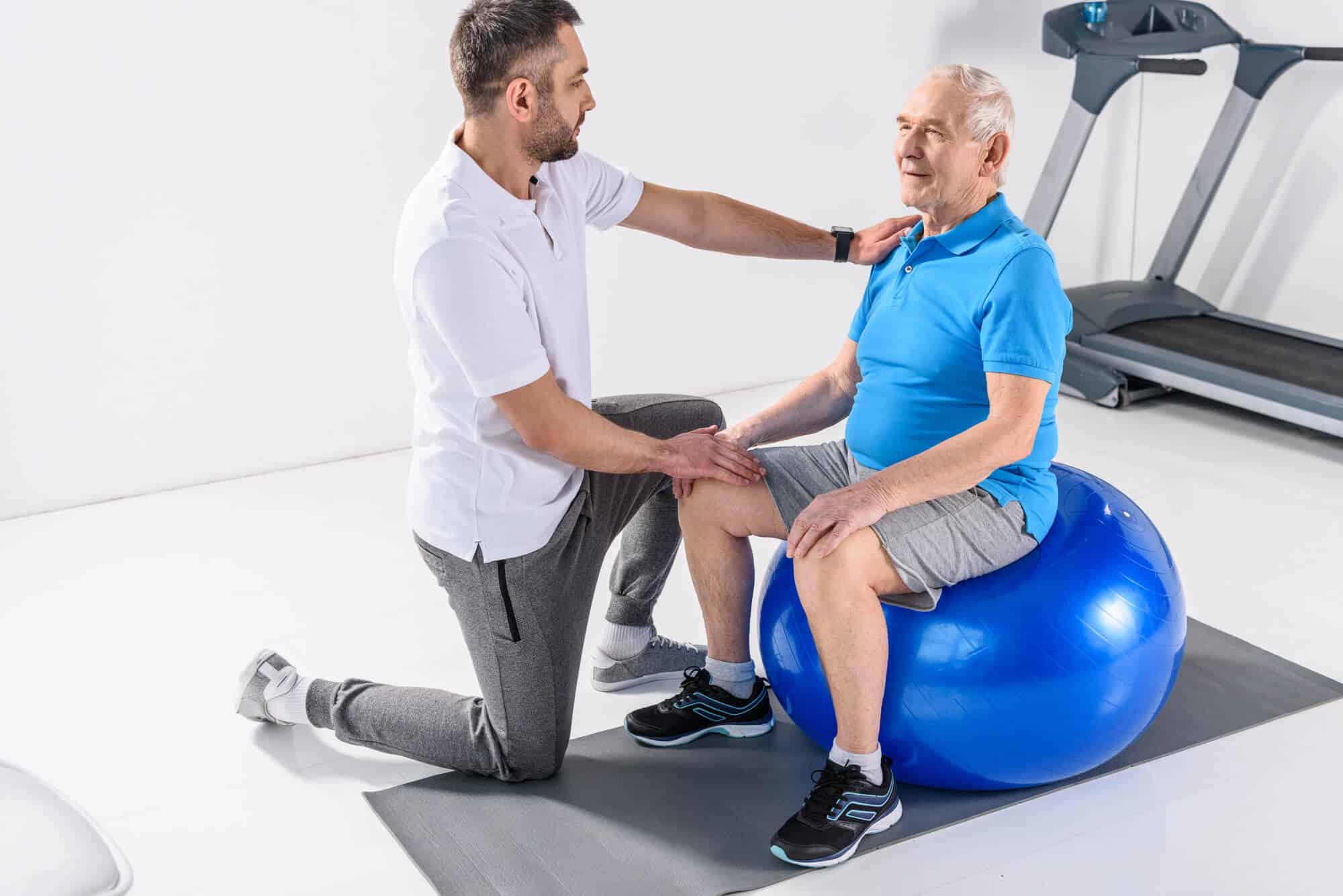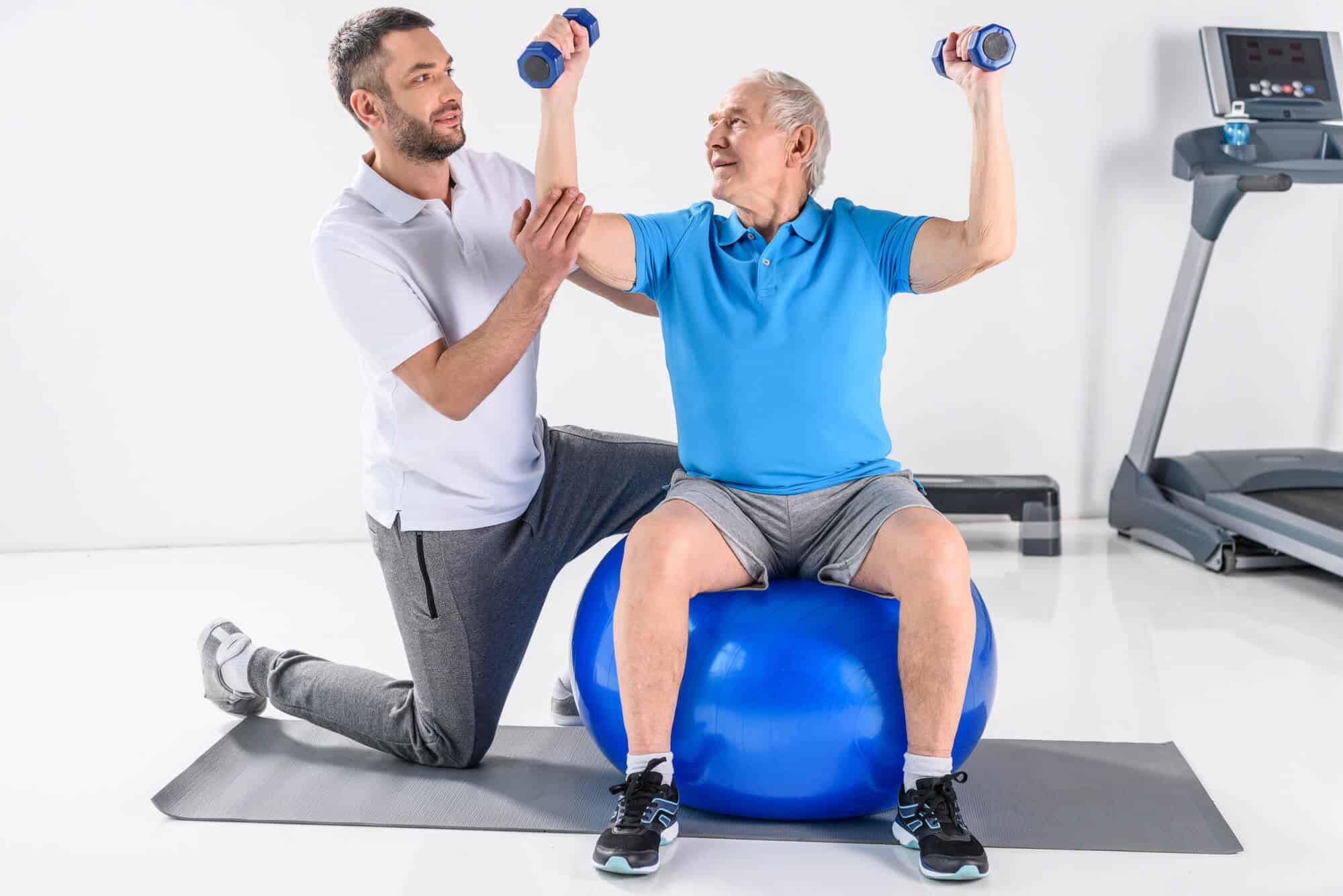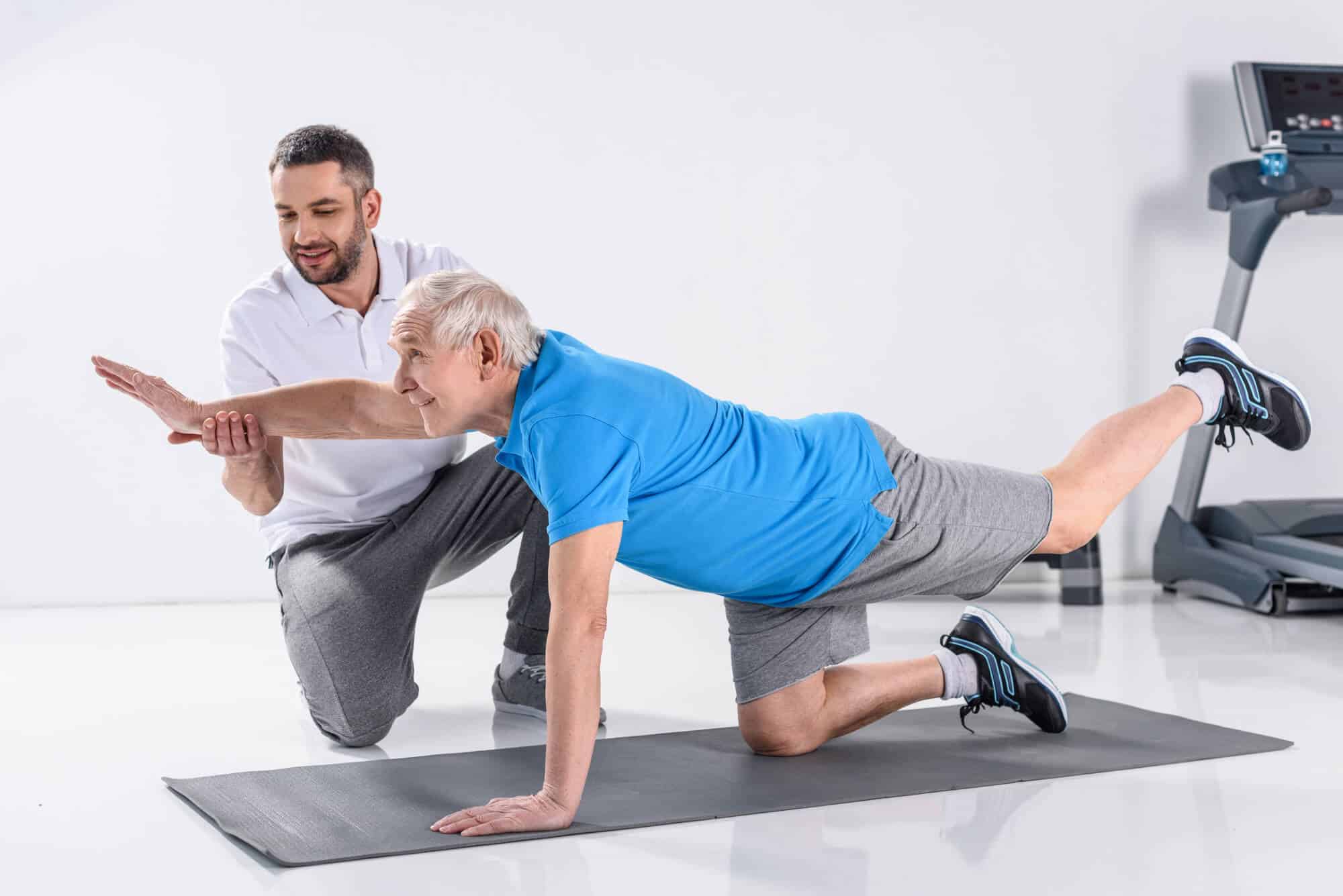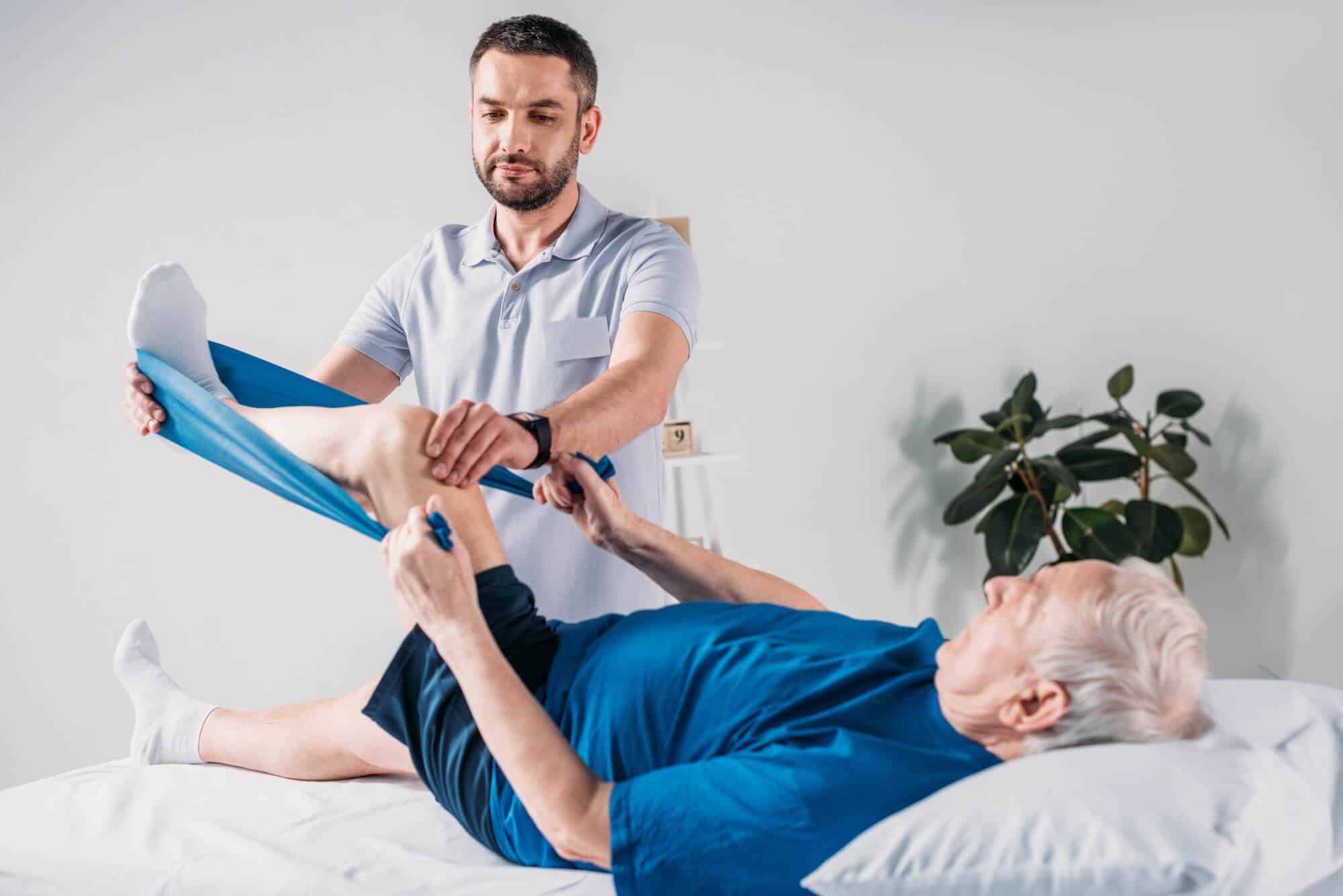Do you have a passion for helping others? Are you interested in health and fitness? Do you want to help injured people get back on their feet?
If so, then a career as a physical therapist assistant may be a good fit for you.
Physical therapist assistants (PTAs), as the name implies, work as assistants to physical therapists and provide patients/clients with physical therapy services and treatments.
PTAs carry out the specific physical therapy plan for the patient created by the PT. PTAs provide a variety of therapeutic techniques such as functional training, therapeutic exercise, deep tissue massages, electro therapies, and ultrasound therapies, to name a few.
PTAs also provide patients with guidelines on how to maintain physical health and avoid injury.

What is a Physical Therapist Assistant (PTA)
Being a physical therapist assistant (PTA) is a rewarding and fulfilling job. PTA’s are involved in helping patients recover from injuries, illnesses, and dealing with chronic conditions. Continue reading to learn how to become a physical therapist assistant.
They are a fundamental part of a patient’s recovery. Not only working closely with individuals, but also carrying out a wide range of tasks to keep a physical therapist’s practice running smoothly from an operational and clerical stance.
Before going into the details of the education, credentials, and qualifications required to become a physical therapist assistant. Let’s take a look at the job description and the qualities that not only attract people to this profession, but make them successful.
Key Duties of a Physical Therapist Assistant
Physical therapist assistants are responsible for the following duties:
- Working with and observing patients as they carry out their therapy
- Giving patients hands-on support with their exercises
- Educating and communicating with patients and families about their treatment plans
- Using the necessary equipment to aid recovery
Physical therapist assistants provide support to physical therapists. They work under the supervision of the physical therapists and treat patients. They use exercises, massage, balance training and other therapeutic forms of medicine.
They are also responsible for keeping records of progress up-to-date. Recording all the exercises performed, what improvements have been made, and any additional notes relevant to the patient.
A good physical therapist assistant needs to have good communication skills, interpersonal skills, administration skills, a keen eye for detail, and a positive attitude for motivating and bringing out the best in patients.
Important Qualities of a Physical Therapist Assistant:
Physically Strong
Physical therapist assistants are on their feet most of the day and help patients carry out exercises. Being able to support another person’s body weight and help them hold their balance is very important.
Compassion
There needs to be a genuine desire to help others to be a successful PTA and enjoy what you do. You will be helping people all day, seeing other people recover from injuries and do things they may not have thought possible should bring you joy.
Attention to Detail
When working with patients to achieve small and large goals, having an eye for detail is incredibly important. This also applies to the administration side of the role. Medical records require a high degree of accuracy.
Interpersonal Skills
The role involves spending a lot of time interacting with patients. As well as communicating with their families and other healthcare professionals. Being able to communicate effectively is key part of this role.
Hands-on Practical Skills
Working with patients requires a hands-on practical approach. Physical therapist assistants are comfortable using their hands, and have a high degree of dexterity.
Being a physical therapist’s assistant can be a very rewarding role if you possess some or all of the above qualities. These skills can be worked on and developed, so don’t be disheartened if you feel you need to work on some of these areas.
PTA’s are an important part of a clinical team. Being involved in a person’s recovery from injury, illness or helping them manage a chronic condition is literally a life changing role. It comes with both a great deal of responsibility, but also a great deal of satisfaction.
The average physical assistant salary is .
Physical Therapist Assistant Work Environment
The majority of PTAs work in physical therapists offices and work under the supervision of physical therapists.
PTAs spend a lot of time on their feet as they administer therapy techniques and move equipment around.
Most PTAs work full time.
Nights and weekends are common as physical therapist offices tend to have extended hours.
Some PTAs work for multiple therapists and in more than one office.
Since they are frequently on their feet and routinely move heavy equipment and patients, PTAs are at risk for back injuries from overexertion.

Becoming a Physical Therapist Assistant (PTA)
Physical Therapist Assistant Education Requirements
Becoming a PTA requires one to complete an associate’s degree program at an accredited university.
All states require PTAs to be licensed and certified.
Many PTAs train and become specialized in one particular area of therapy, such as aquatics or pediatric therapy.
Accreditation
All accredited programs for PTAs are accredited by the American Physical Therapy Association’s (APTA) Commission on Accreditation in Physical Therapy Education.
According to the US Bureau of Labor Statistics, there are more than 300 accredited PTA associate’s degree programs in the US.
Most states require licensed PTAs to have graduated from an APTA-accredited program. The APTA ensures that accredited programs adhere to a very high standard of education and training.
What You’ll Study
In PTA programs the name of the game is therapy. Classwork and practical instruction focus on the theory and administration of therapeutic techniques.
Coursework may include things like therapeutic exercises, physiology, medical terminology, healthcare law, and rehab procedures. The curriculum in these programs normally involves a lot of hand on-training either in a therapist’s office or a teaching hospital.
Employers consider clinical experience a very important qualification for PTAs.
PTA curricula also involve the natural and biological sciences.
All PTAs are required to have intimate knowledge of human anatomy/physiology as well as biochemistry and biology.
Several programs also incorporate liberal arts courses like psychology and English.
Higher level courses in the programs focus on meeting the requirements for the licensing exam.

Training Information & Types of Physical Therapist Assistant Degrees
The basic degree required to be a PTA is to earn an associate’s degree.
Most associate’s degrees take about 2 years to complete and are offered at community colleges, vocational schools, and technical colleges. You can find find a school in your state by visiting our list of physical therapy assistant schools.
The basic associate’s degree program is meant to instruct students on basic rehabilitation, intervention, and data collection methods
It is very important that you choose an accredited degree program.
Most states require by law that PTA both have graduated from an APTA-accredited program and hold their state license.
You will only be able to sit for the license exam if you have graduated from an APTA-approved program.
There also exist bachelor’s level programs for PTAs. These programs are a bit rarer and are normally taken by professional PTAs who want to advance their skills for career growth.
Option 1: Physical Therapist Assistant Associate’s Degree
The most basic option for PTA education is to attend an associate’s level program.
These programs are normally offered at traditional 4-year universities and offer a nice mix of classroom instruction and hands-on practice.
Associate’s level curricula tend to incorporate at least 3 semesters of clinical practicum during which they will be working with actual patients under the supervision of a physical therapist.
During their clinical training, PTAs will learn about basic medical care as well, including emergency medical care like CPR and first aid training.
Admission Requirements
Admission requirements are similar to that of most associate’s level programs.
You must have a high school diploma or GED and send in your official transcripts.
Some programs may require you to send in standardized test scores and a few will have you take a placement exam while applying.
A small percentage of programs require applicants to have some professional experience working in the medical field.
Courses
The courses in an associate’s level PTA program are aimed at teaching the basic theory and methods of physical therapy.
Students will learn how to administer therapeutic techniques and how to collect data on patients according to the treatment plan drawn up by the physical therapist.
Some courses could include:
- Pathology
- Kinesiology
- Therapeutic exercise
- Orthopedics
- Physical therapy modalities
Option 2: Physical Therapist Assistant Bachelor’s Degree
Bachelor’s level programs for physical therapist assistants involve an advanced curriculum that lets newly certified and currently working PTAs the education to enhance their employability in the field.
A bachelor’s PAT program is focused on closing the gap between a PTA and a doctor of physical therapy.
The advanced curriculum of these courses involves revenue cycle management, pharmacology, advanced orthopedics, neurological care, statistics, and leadership.
Bachelor’s programs for physical therapist assistants are rarer than associate’s level programs but are becoming more common as the field becomes more competitive.
Admission Requirements
The admissions requirements differs depending on the program.
In general, you must have at least a high school diploma or GED.
Many bachelor’s programs may require applicants to have completed some prerequisite courses or have some professional and clinical experience in the field.
Courses
The courses in a bachelor’s PTA program are largely the same as those in an associate’s level program but to a greater degree of complexity and sophistication.
These courses are meant to provide an advanced foundation in the technical and evidence-based knowledge necessary to enhance employability beyond the associate’s level.
Some courses may include:
- Exercise physiology
- Health Care Law and Compliance
- Clinical Kinesiology
- Practice Specific Rehabilitation
- Chemistry
- Technical Writing
- Pharmacology for Rehab
- Clinicians
Online Physical Therapist Assistant Programs
There are currently no 100% online PTA degree programs.
This is because getting your PTA degree requires a certain amount of clinical practice under the supervision of a physical therapist.
Some programs may let you take specific courses online but some classes have to be taken in person.
Click the button below to find programs near you.
How to Get Your Physical Therapist Assistant License
All states require PTAs to be licensed.
The exact requirements differ depending on the state but there are two general requirements.
First, applicants must have completed an associate’s degree from an APTA-accredited program.
Second, applicants must pass the National Physical Therapy Examination (NPTE) which is administered by the Federation of State Boards of Physical Therapy.
Once you pass the NPTE you will obtain your PTA license and can begin working.
License Renewal
Most states require license holders to take a certain amount of continuing education credits to maintain their license.
Renewal normally takes place once every two years. Check with your state licensing board for the specifics of PTA license renewal.
A word of note: It is illegal to work as a PTA with an expired license so make sure to be prompt about renewal. While you probably won’t be thrown in jail for practicing without a license, you can incur fines and penalties.
If you wait too long to renew your license you may be required to take the NPTE again.

Summary
Let’s go over the basic steps on how to become a physical therapist assistant.
Step 1. Complete a PTA associate’s degree
The first step is to get the right education. An associate’s degree is the minimum educational requirement to work. Bachelor’s level PTA programs exist but are not required to land a job.
Step 2. Pass the NPTE licensing exam
After finishing your program you must complete the NPTE licensing exam before you can work as a PTA. The exam has a written and multiple choice component that covers medical terminology and basic therapeutic techniques as well as a practical component.
Step 3. Find a job
Once you pass the NPTE you will be qualified to work as a PTA. The majority of PTAs work in the offices of physical therapists and hospital outpatient rehab centers. Some PTAs come to patients’ houses to work with them on their rehab.
Step 4. Maintain/renew your license
All states require PTAs to be licensed and to maintain that license by completing a certain amount of continuing education credits.
The exact requirements for license renewal differ from state to state so make sure to check with your state licensing board for requirements.
Physical Therapist Assistant Job Growth, Salary & Outlook
PTAs face excellent starting salaries and an extremely high potential for career growth.
The median annual salary for PTAS in 2018 was $48,090 ($23.12/hour) and the profession is expected to grow by 30% from 2016 to 2026, much faster than the average career growth.
PTAs employed in private nursing facilities see the highest salary in general.
How Much Does It Cost to Become a Physical Therapist Assistant (PTA)?
- The average annual cost for an associate’s program is $20,043 with an average 2 year total of $40,086.
- The average annual cost for a bachelor’s program is $32,613 with an average 4-year cost of $130,452.
How Long Does It Take to Become a Physical Therapist Assistant (PTA)?
It takes 2 years to finish an associate’s degree. Factoring in a few months to study for the licensing exam and to find a job, you can be working as a PTA in as little as 1 and a half years.
Frequently Asked Questions
A bachelor’s degree is not required to work as a PTA but is becoming more common as the field becomes more competitive. A bachelor’s degree is a good idea for currently practicing PTAs who want to enhance their careers.
To get your PTA license you must pass the NPTE, the national test for all physical therapists assistants. The NPTE for PTAs contains 200 multiple choice questions.


One Response
Yes, the program is 2 years. But you must take the required prerequisites in order to even apply to the program. Depending on your course load or if you are a working adult, that can take up to a year. Please inform yourself on these requirements before stating it takes just 2 years to complete your degree.
Regards